Introduction
For any business considering an Employee Stock Ownership Plan (ESOP), understanding valuation is key. ESOP valuation is a complex but essential element, determining the value of your company’s shares for the plan.
What is an ESOP Valuation?
ESOP valuation is the process of determining the fair market value (FMV) of a company’s stock, specifically for the purpose of an ESOP. FMV is the price that an asset would sell for on the open market when both the buyer and seller are informed, willing, and not compelled to transact. It reflects the value of an asset in an arm’s-length transaction, where neither party is under pressure to buy or sell.
Key Factors in an ESOP Valuation
Several factors influence ESOP valuation:
- Financial Performance: Profitability, revenue trends, and financial health.
- Market Conditions: Industry trends and economic environments.
- Future Prospects: Growth potential and business plans.
The Valuation Process
The ESOP valuation process typically involves:
- Selection of a Valuation Firm: An independent firm with ESOP expertise.
- Data Collection and Analysis: Gathering financial records and market data.
- Valuation Methodologies: Applying standard valuation methods, like the income, market, and asset approaches.
Frequency and Timing of Valuation
ESOP Valuations are conducted annually, aligning with the plan year. Timely valuation ensures accurate share price determination for transactions within the ESOP as well as annual administration and plan activity.
Challenges in ESOP Valuation
Valuing a business for ESOP purposes can be complex, involving judgments and fluctuating market conditions. Ensuring accuracy and compliance with regulations is crucial.
Using Valuation to Guide Decision Making
The valuation outcome is pivotal in shaping ESOP structure and informing business strategies. It can provide a basis for making informed decisions about the plan’s future.
Conclusion
A thorough and fair ESOP valuation is fundamental for the success of an ESOP. Understanding its intricacies helps business owners navigate this critical aspect, ensuring a beneficial outcome for both the company and its employee-owners.

